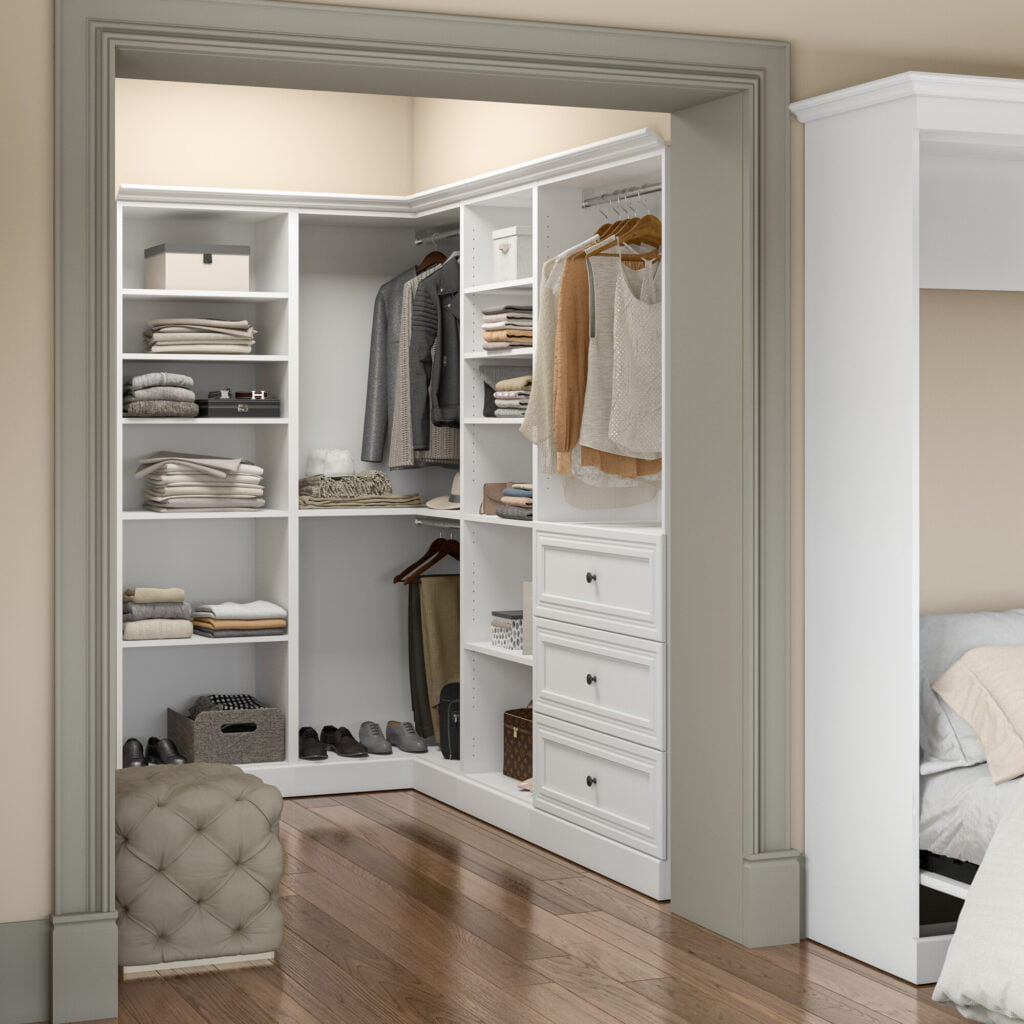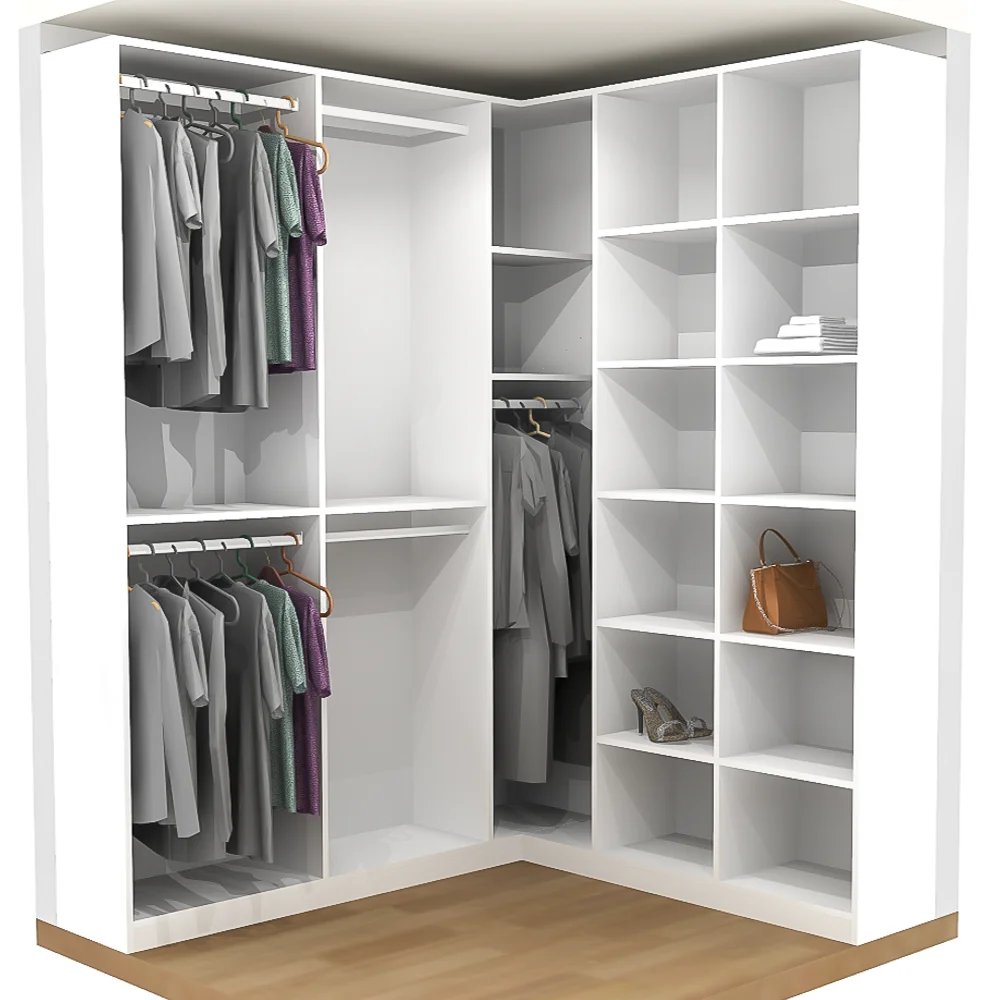Does the mere thought of your closet send shivers down your spine? Does the looming mountain of clothes threaten to topple over every time you open the door? We’ve all been there. A cluttered closet can be a constant source of frustration, making it hard to find what you need and get dressed efficiently. But fear not, there’s a solution within your grasp – a DIY closet organizer!
Building your own organizer offers a multitude of benefits. First and foremost, it allows you to customize the design to perfectly fit your closet’s dimensions and your storage needs. No more trying to squeeze your belongings into pre-fabricated units that don’t quite work. Second, a DIY project is significantly more cost-effective than buying a pre-made organizer. Finally, there’s the immense satisfaction of creating something yourself and transforming your chaotic closet into a haven of organization.
So, grab your toolbox and get ready to conquer the clutter! This detailed guide will walk you through every step of the process, from planning your organizer to the final installation.
Planning Your Masterpiece: Taking Measurements and Choosing a Design
Before diving headfirst into building, a little planning goes a long way. Here’s what you need to do:
- Measure your closet: This is crucial for ensuring your organizer fits perfectly. Grab a tape measure and meticulously record the closet’s height, width, and depth. Don’t forget to account for any existing fixtures like hanging rods or shelves that you plan to keep.
- Choose your design: Now’s the fun part – letting your imagination run wild! Here are a few design ideas to get you started:
- Shelving only: This is a great option if you have a lot of folded clothes and accessories. You can customize the number and depth of shelves based on your needs.
- Hanging rods and shelves combination: This is a versatile option that provides space for both hanging and folded clothes.
- Shoe storage: Don’t let your shoes contribute to the chaos! Plan for cubbies, tilted shelves, or a dedicated shoe rack at the bottom of your organizer.
Once you have a basic idea in mind, sketch out a simple design on paper. This will help you visualize the layout and ensure everything fits within the available space.
Gathering the Essentials: Materials and Tools
Now that you have a plan in mind, it’s time to gather the supplies. Here’s a list of the materials you’ll likely need:
- Wood: MDF (medium-density fiberboard) or plywood are popular choices for their affordability and ease of working with. Pine boards offer a more rustic look but may require additional finishing. Choose the thickness based on your desired sturdiness and the weight you plan to store on the shelves.
- Cutting tools: A saw is essential for cutting the wood to size. A miter box can be helpful for making precise angled cuts, especially if your design incorporates them.
- Drill and drill bits: You’ll need a drill to create holes for screws and pocket holes (explained later). Ensure you have the appropriate drill bits for the wood type you choose.
- Screws: Select screws that are suitable for the thickness and type of wood you’re using.
- Pocket hole jig (optional): This handy tool allows you to create strong, concealed joints for a cleaner and more professional look.
- Sandpaper: For smoothing out any rough edges on the wood before finishing.
- Paint or stain (optional): Give your organizer a personal touch with a coat of paint or stain.
- Hardware (optional): This might include closet rod brackets for hanging clothes or additional hardware depending on your design.

Building Your Dream Organizer: Step-by-Step Guide
With your plan and materials in hand, let’s get down to the fun part – building your organizer!
- Cutting the wood: Following your measurements and design, carefully cut the wood for shelves, sides, and any other components. Remember to wear safety glasses while cutting to protect your eyes.
- Assembling the shelves: Here you have two options:
- Traditional method: Apply wood glue to the connecting surfaces of the wood pieces and secure them with screws. This method is simple but might leave visible screw heads.
- Pocket hole method (using a jig): This method involves drilling angled holes (pocket holes) using the jig and then screwing the pieces together with pocket hole screws. This creates a clean and concealed joint, ideal for a professional-looking finish.
- Attaching back panels (optional): If you want a more finished look, you can cut additional wood panels to cover the backs of your shelves. Simply attach them using the same methods mentioned above for assembling the shelves.
- Sanding and finishing: Once your shelves are assembled, take some time to sand down any rough edges with sandpaper. This will ensure a smooth and polished finish.
- Painting or staining (optional): Here’s where you can unleash your creativity! Apply a coat of paint or stain to your organizer for a touch of personalization and added protection. Choose a color that complements your existing décor.
Installation Day: Mounting Your Organizer and Adding the Finishing Touches
Now that your beautiful organizer is complete, it’s time to give it a permanent home in your closet!
- Attaching the organizer to the wall:
- Locate the wall studs in your closet using a stud finder. These are the vertical supports behind the drywall that provide the strongest mounting points.
- Pre-drill holes in the wall studs at the locations where you plan to secure your organizer.
- Use screws or anchors appropriate for your wall type (drywall, concrete etc.) to firmly mount the organizer to the wall studs. Ensure everything is level for a visually pleasing outcome.
- Hanging the closet rod (if included in your design):
- If your design incorporates a hanging rod, use closet rod brackets or appropriate hardware to securely install it.
- Double-check that the rod is level to ensure your clothes hang properly.

Behold, Your Organized Oasis!
You’ve done it! Step back and admire your handiwork. Your once-cluttered closet is now a haven of organization, making it easy to find exactly what you need. Here are some additional tips to get the most out of your creation:
- Customization is key: Don’t be afraid to personalize your organizer further. Add baskets or bins on the shelves for smaller items, install hooks for scarves or belts, or incorporate a pull-out drawer for frequently used accessories.
- Embrace the bonus section (optional): This section addresses some common issues you might encounter during building or installation and provides an approximate cost breakdown of the materials.
Common Hiccups and How to Fix Them:
- Uneven cuts: Don’t fret if your cuts aren’t perfectly straight. You can use wood filler to conceal minor gaps before painting or staining.
- Misaligned holes: If your pre-drilled holes don’t line up perfectly, don’t panic. You can slightly widen the holes with a larger drill bit to allow for some adjustment during assembly.
- Difficulty mounting to the wall: If you encounter challenges mounting your organizer to the wall (e.g., uneven walls), shims (thin wedges of wood) can be used to create a level surface for secure attachment.
Cost Breakdown (approximate):
- Wood: $30 – $50 (depending on the size and type of wood)
- Screws and pocket hole screws: $10 – $15
- Pocket hole jig (optional): $20 – $40
- Sandpaper: $5
- Paint or stain (optional): $10 – $20
- Hardware (optional): $5 – $15
Total: $80 – $160 (This is a rough estimate and can vary depending on the materials you choose and the size of your organizer.)
Overall, building your own closet organizer is a rewarding and cost-effective way to transform your space. With a little planning and effort, you can create a customized solution that perfectly meets your storage needs. So, grab your tools, unleash your creativity, and get ready to conquer the clutter.
Bonus Tips and Tricks
Here are some advanced techniques and considerations for the truly DIY enthusiast:
- Reinforcing shelves for heavy loads: If you plan to store heavy items on your shelves, consider adding additional support. Here are a couple of options:
- Shelf brackets: Metal shelf brackets can be installed underneath the shelves for added reinforcement.
- Cleats: Cleats are triangular pieces of wood that are attached to the wall and the underside of the shelf, providing a strong and concealed way to support heavy loads.
- Incorporating drawers: For a touch of luxury and organization, consider adding drawers to your design. You can purchase pre-made drawers or build your own using plywood and drawer slides.
- Lighting it up: For improved visibility within your closet, especially in walk-in closets, install LED strip lights underneath the shelves or along the top of the organizer. This will make it easier to find what you need, especially in dimly lit spaces.
- Going mobile: If floor space is at a premium, consider building a mobile closet organizer. Add casters (wheels) to the bottom of your organizer for easy movement and access.
- Repurposing materials: For the eco-conscious DIYer, consider using reclaimed wood or leftover materials from other projects. This can add a unique touch to your organizer and reduce waste.
- Advanced design considerations:
- Corner shelves: Maximize unused corners by incorporating corner shelves into your design. These can be triangular or L-shaped to fit snugly in the corner space.
- Bifold doors: For a more polished look, consider adding bifold doors to your organizer. This can help conceal clutter and create a clean aesthetic.
Remember: Safety first! Always wear safety glasses while cutting wood and use appropriate drill bits for the materials you’re working with. If you’re unsure about any aspect of the building process, don’t hesitate to consult a professional or watch instructional videos online.
Final Thoughts
Building your own closet organizer is more than just a DIY project; it’s an investment in your sanity and well-being. A well-organized closet can save you time and frustration in the mornings, allowing you to focus on more important things.
With the knowledge and resources provided in this guide, you’re well on your way to creating a customized and functional closet organizer that reflects your style and storage needs. So, unleash your inner builder, embrace the challenge, and get ready to enjoy the satisfaction of a job well done and a clutter-free closet!

